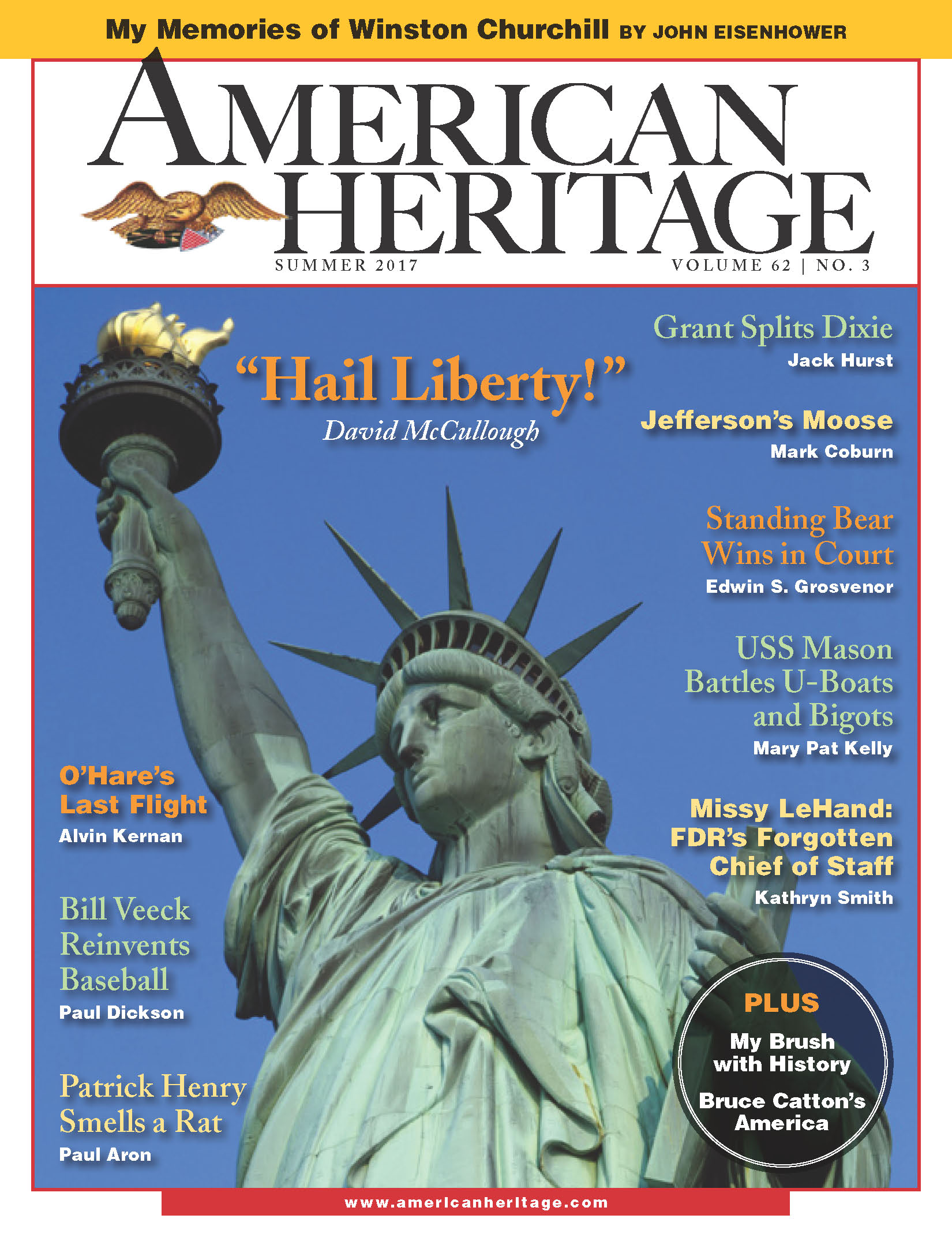At the apex of its power, the Ku Klux Klan staged an enormous march on Washington in 1925
-
July/August 2000
Volume51Issue4
On August 8 some forty thousand white-robed members of the Ku Klux Klan marched peacefully up Pennsylvania Avenue in Washington, D.C., in what the Washington Post called “one of the greatest demonstrations this city has ever known.” Enthusiastic spectators packed sidewalks and side streets along the route and kept up a steady stream of applause. The throng had turned out despite a lack of advance publicity for what had started as a small, local parade and ballooned at the last minute. Few shopkeepers had taken any notice of the event; according to the Post , “One lone Jewish merchant on Seventh street decorated his show windows with banners reading, ‘Welcome K.K.K.’”
About half the marchers were from Pennsylvania and New Jersey, but many other states were represented, from an Akron, Ohio, glee club to Virginia’s fetching Kluxettes, who beat out snappy rhythms on snare drums and carried a pair of forty-by-seventy-five-foot flags. New York also had a large contingent of marchers, with one upstate town sending 76 of its 202 residents.
Banners bore such slogans as KEEP KONGRESS KLEAN . In a nod to diversity, it was reported, “local klansmen sought to have the Community Center band, a colored aggregation, participate in the parade, but James E. Miller, the bandmaster, refused to let his men play.” The next day seventy-five thousand members and supporters witnessed the burning of an eighty-foot cross in Arlington, Virginia, and the laying of wreaths on the tombs of the Unknown Soldier and of William Jennings Bryan.
The summer of 1925 saw the Ku Klux Klan at the apex of its power, or perhaps just past it. The original Klan had been founded in the South after the Civil War to suppress black civil rights. With that accomplished, it had disbanded, only to be resurrected in 1915 as a combination fraternal order, nativist lobbying group, and vigilante band. In its reconstituted form the Klan placed the greatest emphasis on fighting Catholicism, which earned it considerable support in the North. Nonetheless, its hostility was general enough to encompass blacks, Jews, women with modern ideas, and various other groups it deemed dangerous. At its peak the Klan had three to four million members.
At least eight governors and a dozen U.S. senators were elected on the strength of the Klan’s backing, along with scores of local officials. Klan lobbying had been crucial in persuading Congress to pass a strengthened anti-immigration act in 1924. Another favorite Klan cause was the establishment of a federal department of education, an idea that would not take hold until the 1970s. This proposal, coupled with a move to increase teachers’ salaries, was part of the Klan’s campaign to fortify public education against the menace of Catholic schools.
Even in its hour of triumph, however, the Klan was starting to crumble. A few months earlier the head of the Indiana chapter had raped and murdered a female acquaintance. A North-South schism imperiled the Klan’s unity, and corruption among its officers was taking a toll as well. The 1926 parade drew much smaller groups of marchers and spectators, and from then on its decline was rapid. By the end of the decade the Klan had lost virtually all its influence in mainstream politics.


